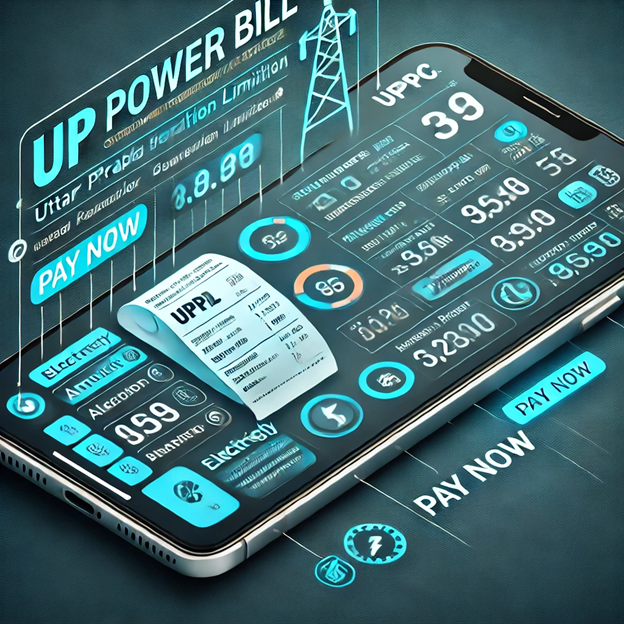When that monthly statement arrives and you have to decode your UP Power bill, it can feel like deciphering a foreign language. Various sections, numbers, and terminologies can be daunting. Understanding what these charges mean can help you budget better and make more informed decisions about your energy consumption. Whether it is the UP Power bill or an electricity bill from another region, breaking down the components can be enlightening.
Breaking Down Your UP Power Bill
Your UP Power bill consists of several distinct sections that provide detailed information about your electricity consumption and the charges associated with it. Let’s break these down:
1. Meter Reading and Consumption
This section typically appears at the top of your electricity bill. It includes:
– Previous Reading: The meter reading from the last billing cycle.
– Current Reading: The current meter reading.
– Units Consumed: The difference between the previous and current readings, which represents the total units of electricity consumed during the billing cycle.
Understanding your consumption pattern is the first step toward managing your energy usage effectively.
2. Tariff and Rate Details
Here’s where you see the cost per unit of electricity. The rate may vary depending on various factors such as:
– Slab Rates: Many regions, including UP, follow slab rates where the cost per unit increases with higher consumption.
– Fixed Charges: A fixed component that you pay regardless of your consumption.
Understanding the rates applicable to you can help you plan effective energy-saving strategies.
- Taxes and Government Levies
This section includes various government-imposed taxes such as:
– Electricity Duty: A tax levied by the government on your electricity consumption.
– Other State Charges: These could include environmental taxes or cess.
Adding these taxes and levies can significantly increase your total bill amount, making it crucial to consider them while analyzing your bill.
- Adjustments and Previous Dues
Your UP Power bill may also comprise past dues if any, or adjustments for any overpayments or underpayments in previous cycles. Regularly monitoring this section ensures you’re aware of any outstanding amounts.
- Miscellaneous Charges
This category covers a variety of additional costs such as:
– Service Charges: Fees related to meter maintenance and other services.
– Late Payment Fees: Charges incurred if the previous bill wasn’t paid on time.
Effective Strategies to Manage Your Electricity Bill
Understanding the breakdown of your UP Power bill is only the first step. Here are some effective strategies to manage your electricity bill:
- Energy-Efficient Appliances: Invest in appliances that are energy-efficient. Look for the star ratings provided by the Bureau of Energy Efficiency (BEE) when purchasing new devices.
- Smart Usage: Unplug devices when not in use and use programmable thermostats and timers to reduce consumption.
- Regular Monitoring: Keep an eye on your electricity bill and adjust your habits as necessary. Regularly checking your meter reading against the bill can also help you spot discrepancies.
- Seasonal Adjustments: During extreme weather conditions like summer or winter, your consumption may spike. Prepare for these fluctuations by adjusting your usage patterns.
Using the BBPS Platform on Bajaj Finserv
After breaking down your UP Power bill and making efforts to manage your consumption, you need a reliable, convenient way to pay your electricity bill. This is where the Bharat Bill Payment System (BBPS) on Bajaj Finserv comes into play.
BBPS is a one-stop solution for UP Power bill payment. Hosted on the Bajaj Finserv platform, it offers a plethora of benefits including:
– Secure Transactions: With robust security protocols, your transactions are safe.
– Multiple Payment Options: You can choose from a variety of payment methods ranging from net banking to debit/credit cards.
– Fast and Efficient: The payments are processed quickly, ensuring that you avoid any late payment fees.
– User-Friendly Interface: The platform is easy to navigate, making the bill payment process hassle-free.
To use the BBPS platform on Bajaj Finserv, simply log in, choose the biller (in this case, your electricity provider in UP), enter the relevant details, and proceed to payment. Not only do you save time, but you also gain the peace of mind that your bill is paid accurately and promptly.
Conclusion
Understanding your UP Power bill can seem daunting at first, but breaking it down into its components makes it much more manageable. By understanding meter readings, tariff details, and various charges, you can better control your energy usage and costs. Furthermore, utilizing efficient bill payment platforms like BBPS on Bajaj Finserv ensures your payments are seamless, safe, and timely. So, the next time that electricity bill arrives, you’ll be better prepared to understand and manage it efficiently.
Read More: Inclusive Design: What It Is and Why Your Product Needs It



